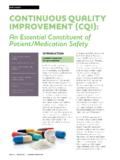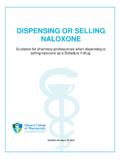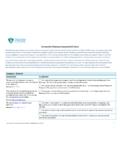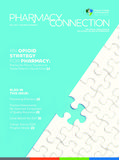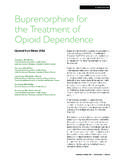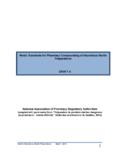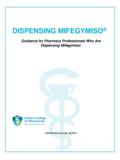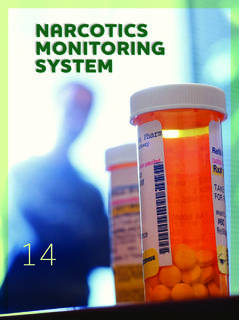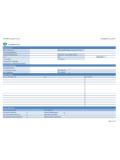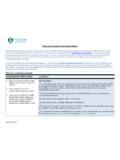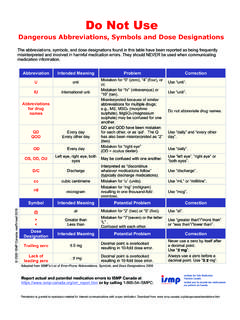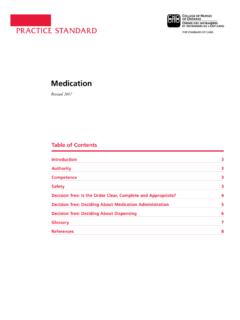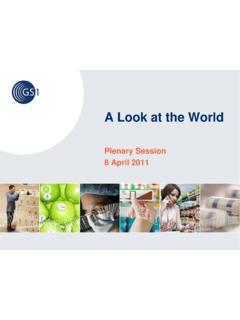Transcription of QU A LIT Y A ND S A FET Y IN C OMPOUNDING N …
1 28 QUALITY AND SAFETY IN COMPOUNDING NON-STERILE PREPARATIONS Z Z pZ p V V Z School of Pharmacy, University of WaterlooAnalyst, ISMP CanadaCertina Ho, BScPhm, MISt, MEdProject Manager, ISMP CanadaAdjunct Assistant Professor, School of Pharmacy, University of Waterloo p p Patients are put at risk !hen compounded preparations are belo! regulatory standards. Multiple studies have sho!n pharmacy-compounded products (for example, bio-identical hormones, nitroglycerin ointments) are at risk for quality issues resulting in sub-potency, supra-potency, and even ,2,3 This article outlines important considerations !hen compounding non-sterile preparations by referring to the ne!ly revised United States Pharmacopeia (USP) Chapter <795> Pharmaceutical Compounding Nonsterile Preparations (as of May 2011) and the Ontario College of Pharmacists (OCP) Guidelines for Compounding Preparations.
2 The USP <795> Chapter defines the specific criteria required to compound preparations of acceptable strength, quality, and purity !ith appropriate packaging and labeling in accordance !ith regulatory agencies. In Canada, drug manufacturing is regulated by Health Canada and compounding is an authorized act regulated by provincial The 2006 OCP Guidelines for Compounding Preparations (available at http://!!!. and currently under revie!) set standards for the quality and safety of compounding practices in Ontario follo!ing section supports the preparation of non-sterile compounds !ithin the context of USP specifications and provincial regulatory standards. Relevant medication incidents voluntarily reported to ISMP Canada (for instance, via the Community Pharmacy Incident Reporting (CPhIR) Program at http://!)
3 !!. ) are used to highlight potential outcomes that may result !hen non-sterile compounding guidelines are not follo!ed. Before compounding a non-sterile preparation, the need for the compounded product is confirmed by checking for commercially available preparations in the Health Canada s Drug Product Database (http://! ), and contacting manufacturers. To comply !ith the Health Canada policy on compounding, this confirmation is required in order to validate the lack of product availability and avoid duplicating an approved drug !GE 30 ~ SPRING 2012 ~ PH!RM!CY CONNECTION-1- PERSONNEL "fter confirming the need to compound a preparation, designated managers need to ensure compounders (!ho are responsible for compounding preparations that are accurate and adhere to provincial standards) have accurate kno!
4 Ledge and The compounder must use professional judgement !hen deciding !hether they have the expertise to compound a specific This includes understanding chemical and physical properties of ingredients, using appropriate equipment, and perform-ing necessary p p Compounders need to prepare non-sterile preparations in designated areas. Designated areas are described as an appropriate environment ( adequate space, lighting, and storage) to prevent cross-contam-ination and the inadvertent addition of extraneous material to the ,6 The OCP Guidelines for Compounding Preparations supports this practice by including provisions for OCP recommends the pharmacy have a !ritten sanitation program that specifies cleaning and disposal The !ritten program should also address hygienic behaviors (such as, !)
5 Ardrobe, hand !ashing, management of injuries) of pharmacy staff engaging in compounding Furthermore, the designated area should have access to potable !ater ( drinking !ater) for hand and equipment ! ,6 -3- PROCEDURES AND RESOURCES Sample Case 7: ! pharmacist intended to compound an oral suspension of clonidine (using clonidine po"der) for a 15-year-old male. The pharmacist incorrectly compounded the clonidine suspension (due to mixing up during calculations/conversions among grams, milligrams, and micrograms) resulting in a preparation 1,000 times more concentrated than prescribed. Before the error "as discovered, the patient "as admitted to hospital multiple managers need to provide compounders !ith necessary resources to consistently and accurately produce the intended preparation.
6 Formulations should be accessed from a reputable source. If no formulation is available, a formula should be completed using kno!ledge in pharmacology, chemistry, and "s seen in the Sample Case described above, a miscalculation led to dispensing a preparation 1,000 times more concentrated than the intended This incident emphasizes the importance of independent double checks and follo!ing standard-ized procedures to confirm accuracy and quality of compounded preparations. "long !ith defined policies and procedures, compounding preparations require the use of proper resources. This includes using equipment that is clean, and properly ,6 Compounding ingredients must be purchased from reliable sources that are of appropriate identity, quality, and Case (from CPhIR): ! male patient received a prescription for a 1% hydrocortisone in clotrimazole [cream].
7 The compounded preparation contained a piece of "ax paper. The prescription "as prepared from pre-made stock. The pharmacist did not notice the "ax paper in the compounded product and the patient used the preparation containing the "ax control procedures are required to ensure accuracy and In the Sample Case described above, the pharmacy used pre-made stock to fill the prescription. Unfortunately, the pre-made stock contained !ax paper that !as included in the dispensed container. "lthough the !ax paper did not cause harm to the patient, compounders are responsible for ensuring the final product appears as If discrepancies are found in the final preparation, compounders need to resolve such discrepancies in preparation and/or appearance before dispensing to the STABILITY ASSESSMENT Sample Case (from CPhIR): !
8 Patient "as prescribed sulfatrim oral suspension to be taken over a period of 90 days. ! compounded oral suspension of sulfatrim is only stable for 20 days from its day of The pharmacist prepared and dispensed a 90 day supply of sulfatrim oral suspension. The medication error "as caught during dispensing and the patient "as given a 20-day supply "ith the remaining amount credited as refills. "s seen in the Sample Case described above, sulfatrim or co-trimoxazole oral suspension !as not commer-cially available at the time of dispensing due to drug shortages, resulting in the need for the pharmacy to compound or prepare the oral The pharmacist in this particular near-miss situation almost dispensed a compounded preparation intended to be used past the acceptable beyond-use date. This illustrates the need for compounders to understand the concept of beyond-use dates.
9 ISMP C!N!D! REPORTPH!RM!CY CONNECTION ~ SPRING 2012 ~ P!GE 31!hat is the difference bet#een expiry dates and beyond-use dates? The manufacturer or distributor gives an expiry date to a drug product based on kno!n stability data. It indi-cates the expected timeframe in !hich a drug product meets the therapeutic and stability requirements based on the published monograph or literature. Beyond-use dates, on the other hand, provide the date after !hich a compounded preparation shall not be used and are determined from the date !hen the preparation is compounded. Compounders provide the beyond-use date (based on the manufacturer s stability information and the literature !ith respect to stability, compatibility, and degradation of ingredients) to limit patient use of the compounded preparation.
10 "ll compounded preparations must contain a beyond-use Ho# do I figure out the beyond-use date for a compounded preparation?10 The beyond-use date is determined from the date of compounding by applying drug-specific and general stability resources, !hen These resources should consider the nature of the drug, degradation, packaging containers, storage conditions, and the duration of USP <795> states that !hen a manufactured product is used as an active ingredient in a compounded preparation, the product expiry date cannot be used solely to assign a beyond-use date. Beyond-use dates should be assigned conservatively, !hile using professional judgment based on pharma-ceutical education and experience. For non-sterile compounded preparations that are packaged in tight, light-resistant containers and stored at proper temper-atures, consider the recommendations in Table 1 for beyond-use dates !
